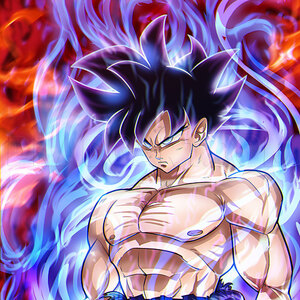1
Let's start by drawing the Predator. We'll begin with these guide lines. This is the shape of the head without all those tentacles.
2
Lighten up your guide lines. Then we'll start drawing the Predator's helmet. I like to start with an L shape for the eyebrow. From there, the entire lower face area is a large, boxy shape. The front is sloped inward, like a shallow bowl.
3
Draw in a square shape for the eye. It's like a sunglasses lens. Then draw the contours of the forehead.
5
Fill in the back line of the jaw. Then add some dashes to shape the front of that jawbone. Above the eye, we can use a thinner line to add some detail and outline the laser site. That's the little round shape. It points directly at whatever he's look
6
Here we'll fill in the eye lens, and add a slope to the front of the mouth area. We can also add some more details around the laser site area.
7
Now we'll start the fleshy part of his head. This ridge that peeks out behind the helmet is where all the dreadlocks grow from. Use inward curves to create the base for each tendril.
9
Using the same type of shapes, fill in the hair around the previous dreads. Vary the length, thickness and curve of the hairs to make everything seems more natural. The dreads closest to the jaw are thin and curve back, under the rest of the hair.
10
Draw small curves across the dreadlocks to create "beads" that serve as proof of successful hunts. The Predator's armored plates are styled after trilobites somewhat, so use that sort of crustacean shape for the shoulder pad.
12
Here's where we can add some more details. On the chest and back, use repeating curves to continue that trilobite look to the armor.
13
Now we'll begin drawing the Xenomorph Alien head. Begin with these guide lines. There's a lot going on here, so take your time to get the proportions right.
14
Lighten your guide lines. Then start the drawing by outlining the front shell that lays across the upper "face." There are multiple wrinkles above the upper lip.
15
Draw the diagonal lines of the jaw muscle, and detail them with some curves. Next draw in the upper teeth and gums. On the forehead area, we'll draw irregular curves to indicate sloped areas that sink inward. Note the thickness of the lines. The thic
16
Outline the lower jaw and draw the remaining teeth. The tricky part is drawing between the strands of jaw muscle.
17
For this step, begin by drawing the center line running along the side of the head. Then draw the round shape of the shoulder "girdle." After that we can draw the lumpy organ on the side of the head, and the large neck muscles below. Use tiny, altern
18
Draw lines across each of those neck muscles to create an electrical cable type of appearance. Follow that by drawing the front and back neck muscles. Note the thick-to-thin lines being used here. We want to add some shadow where we can, to show that
19
Here we'll start to really detail the areas between the neck muscles. We'll again use thick-to-thin lines to add shadow and flesh out the neck a bit. We can also draw in the top of the actual shoulder now.
20
Draw small, blob-like shadows to add pits or holes along the curves of the inner neck areas. The slightly longer, slightly more rectangular shadows on the neck muscle give us a bit of a reflective look and a little more dimension to that shape. The o
21
For the top of the head, we're mainly repeating the shape on the back of the face shell. As we get toward the back of the head, the shapes become stretched out. They also become more smooth, to give us a round bulb at the very end. Armor plates line
22
We can now draw in the opposite shoulder "girdle." I'm not even sure what to call it. A bone? A tube thing? I don't know. The back of the neck has that electrical cable look to it -- rectangular segments with smaller lines in between. Above that, we
23
Here we'll shape the main ridges and pits of the armored plates. Thick-to-thin again. The thickest parts of the lines show the biggest difference between two surfaces. Think of the round shapes as eye sockets, with the bony ridge that runs around you
24
Add some finer details across the head. There's a lot of texture to add to the jaw area. Thick-to-thin. Deep wrinkles from the base of the jaw bone, becoming shallower toward the chin. We can finish this up by drawing the secondary mouth, with heavy
Comments 0
Details
January 9, 2014
Description: Ok, this is a cool one. We're going to draw a Predator vs Alien faceoff in a simple style. Well, as simple as we can get with something as detailed as a Xenomorph alien. Ok, let's get to it.

























































































